Magma Chamber Simulator
The Magma Chamber Simulator (MCS) is a numerical code that quantifies the effects of concurrent and/or serial magma Recharge, Assimilation of partial melts and/or Stoped blocks, and Fractional Crystallization (RASFC) on the compositional evolution of a magma body and surrounding wallrock. The MCS integrates a user-defined sequence of open system interactions defined via the MCS executive interface (IGOR) with one of four user-selected MELTS engines (v 1.2.x, v 1.1.x, v 1.0.x or pMELTS) to generate self-consistent phase equilibria (composition and abundances of all crystals, melt, and supercritical H2O-CO2 fluid, temperature, pressure and redox conditions) in all subsystems [Magma, Wallrock and all Recharge reservoirs and Stoped blocks] throughout the (potentially) complex series of user-defined RASFC interactions. MCS supports up to 30 distinct R and/or S episodes. In addition to intensive and extensive thermodynamic and phase equilibria data, multiple trace element concentrations and isotopic ratios may be computed based on user-input of partition coefficients and trace element bulk compositions. A comprehensive set of instructional tutorial videos that provide step-by-step instructions for code download and implementation are available by clicking on Videos from the Home page. The MCS can be run on both PC and Mac computers.
Details about the theory of MCS are provided in Bohrson et al. 2014, Journal of Petrology (v. 55, #9, pp.1685-1717). In addition two recent papers (Bohrson WA, Spera FJ, Heinonen JS, Brown, GA, Scruggs M, Adams J, Takach M, Zeff G, Suikkanen P, 2020 (in Press), Diagnosing Open-system Magmatic Processes Using the Magma Chamber Simulator (MCS): Part I-Major elements and Phase equilibria, Contrib Mineral and Petrol. and Heinonen JS, Bohrson WA, Spera FJ, Brown GA, Scruggs M, Adams J., 2020, (in Press) Diagnosing Open-System Magmatic Processes Using the Magma Chamber Simulator (MCS): Part II - Trace elements and Isotopes. Contrib Mineral Petrol.) provide a plethora of examples and details. Some research studies in which MCS results figure prominently may be found by clicking MCS studies on the Home page. The MCS can be used to generate data for comparison with natural systems of whole-rock, melt inclusion, and phase compositions (major, minor, trace and isotopes) in order to establish the most significant RASFC processes defining the petrogenesis of suites of volcanic and plutonic rocks. The MCS can be used to model AFC processes where assimilation of partial melts of wallrock (WR) or wholesale stoping of blocks (of arbitrary composition and wholly solid, mushy or liquid) is the mechanism of contamination of resident magma (M). Additionally, RFC and FC-only simulations where assimilation is precluded by user-declared fiat can also be performed. Complex scenarios with wallrock partial melt assimilation, magma recharge, assimilation by stoping and fractional crystallization in arbitrary sequence are modeled using a single user-defined executive input file (MES_filename).


